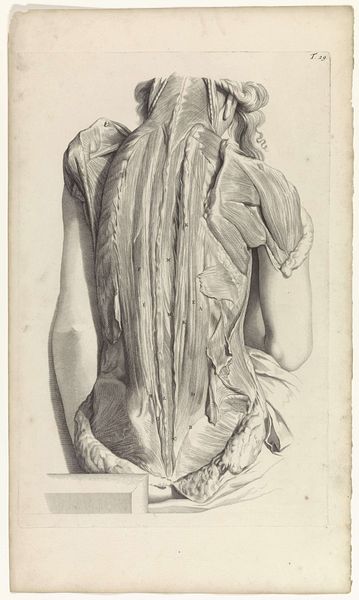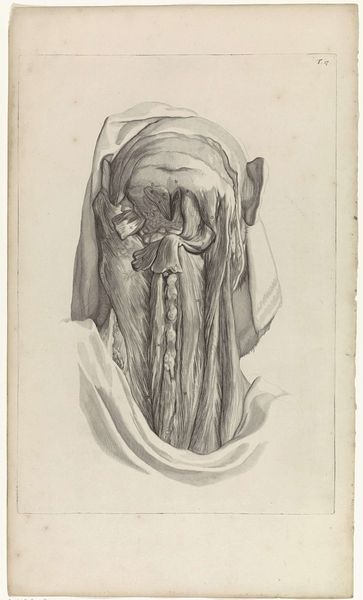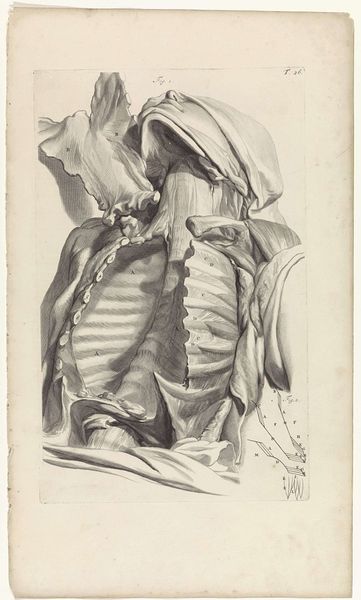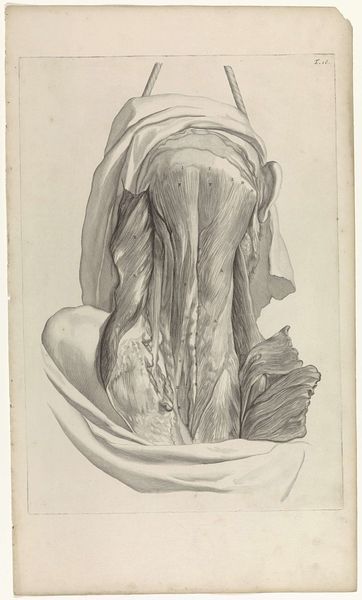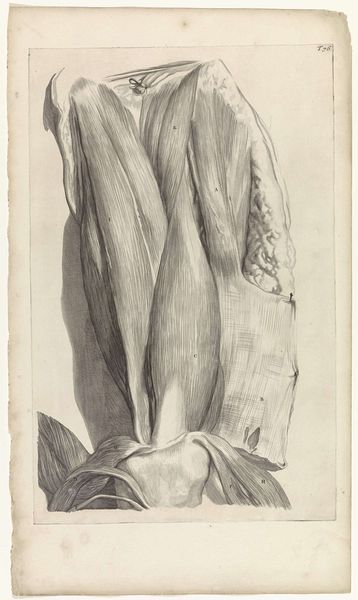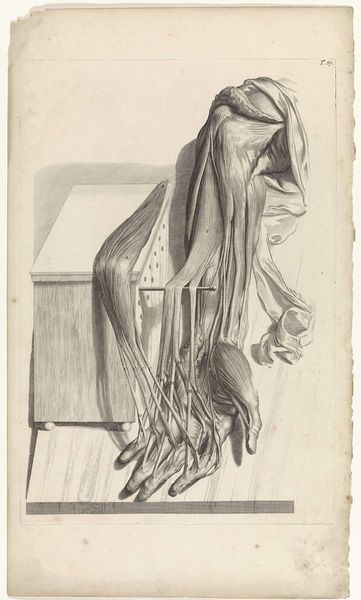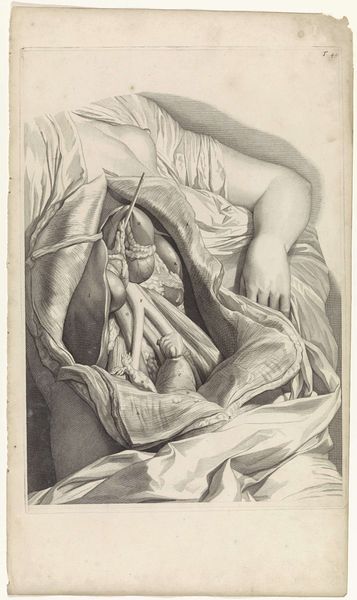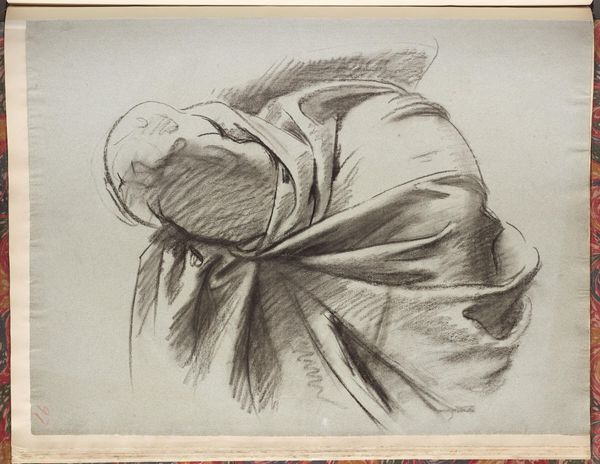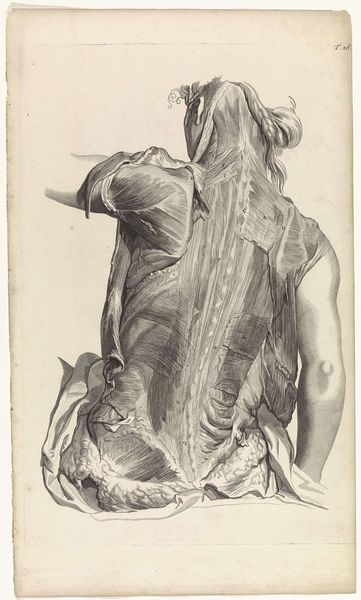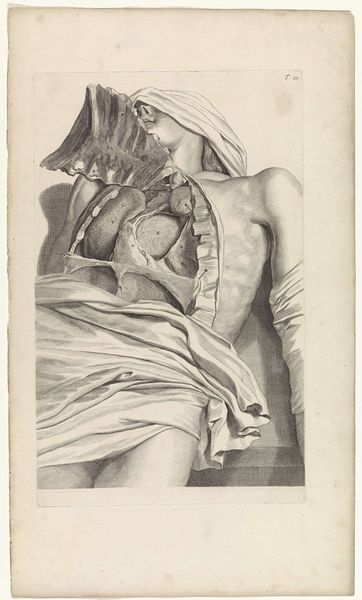
Anatomische studie van de rug en de bovenarmen van een vastgebonden vrouw 1685
0:00
0:00
pietervangunst
Rijksmuseum
print, engraving
#
baroque
# print
#
figuration
#
line
#
history-painting
#
academic-art
#
nude
#
engraving
Dimensions: width 300 mm, height 474 mm
Copyright: Rijks Museum: Open Domain
Curator: Today, we’re looking at “Anatomische studie van de rug en de bovenarmen van een vastgebonden vrouw,” or, “Anatomical Study of the Back and Upper Arms of a Bound Woman,” an engraving created around 1685 by Pieter van Gunst, currently held at the Rijksmuseum. Editor: My immediate response is, it's stark. The intricate lines of the engraving capture so much detail, almost too much. It's unsettling yet undeniably fascinating in its depiction of the exposed musculature. Curator: It’s essential to consider the historical context: anatomical studies during the Baroque period served not only scientific purposes, but also artistic ones. Depictions of the body, even dissected, were crucial for understanding human form and idealizing beauty standards rooted in the subjugation of women’s bodies. Editor: Exactly, the material fact of that labor in acquiring, dissecting and portraying such knowledge, the work is not about abstract beauty but revealing the inner mechanisms. Consider the printing process itself—the copper plate, the pressure, the ink. There’s a whole economy of skill embedded in its creation and replication. And it reproduces that female subjugation to scale. Curator: Absolutely, but note how the bound woman isn't presented as a purely victimized figure. Her exposed muscles convey a certain strength, resisting both gravity and expectation, disrupting preconceived notions of her form that academic art enforced. This engraving raises questions of agency, and what knowledge or insight can be found, even as such systemic oppression is perpetuated. Editor: Interesting point, though I see those bound arms as undeniably symbolic of controlled labor. She represents the raw material worked upon and transformed – whether in an artist’s studio, the halls of science, or, more brutally, through less academic, informal forms of bondage. And printed for distribution and consumption as fact. Curator: The artistic choices Van Gunst made with this piece offer critical layers of insight into the power dynamics embedded within anatomy and art history, while academic notions and print labor still have an immense grip. Editor: I agree, understanding this as part of a wider context of Baroque image production certainly gives me much to ponder with the history of human objectification and the processes that facilitate that today. Curator: Me too, a complicated intersection, for sure, to take with us today.
Comments
No comments
Be the first to comment and join the conversation on the ultimate creative platform.
